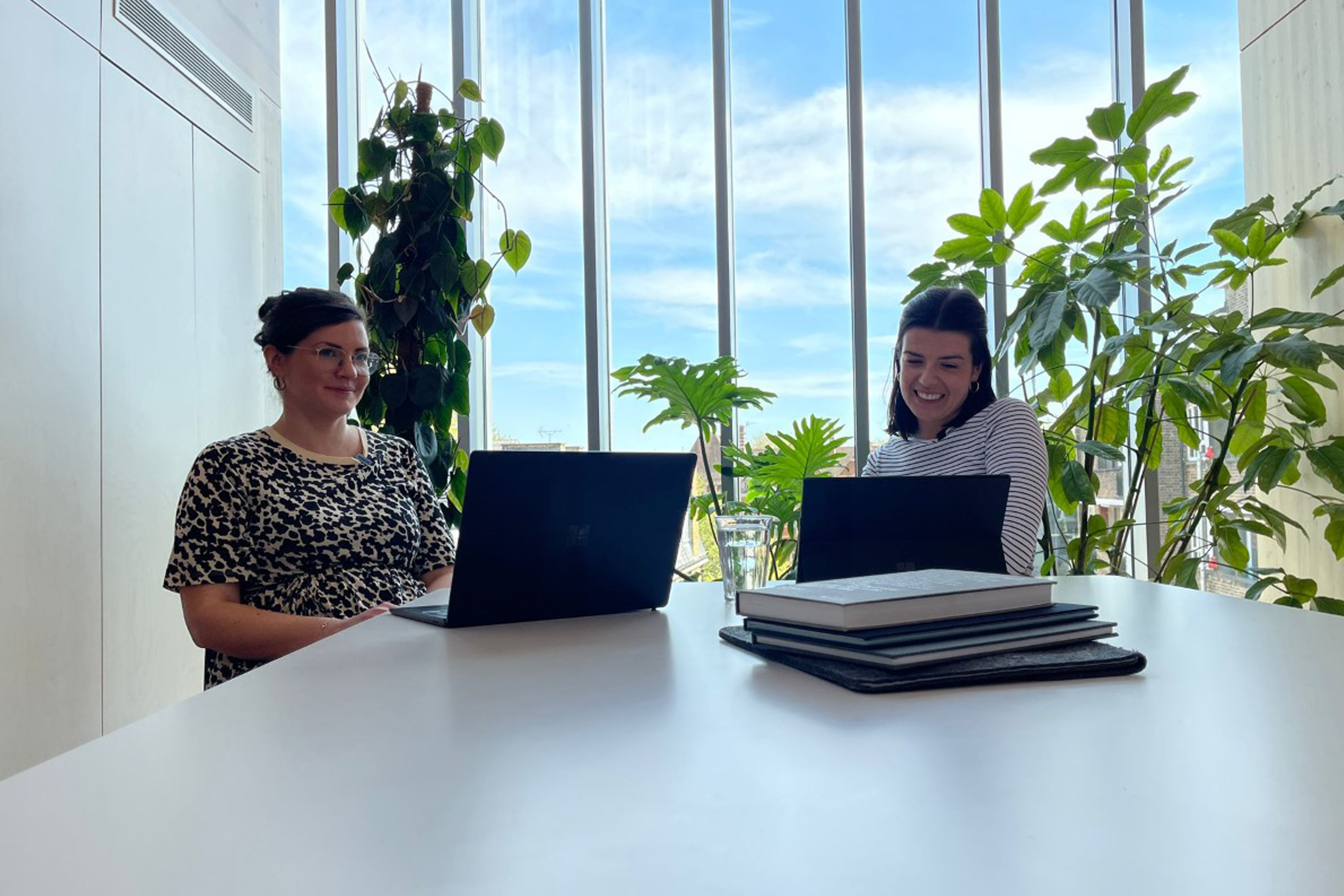Flood mitigation, water management, and SuDS. Finding the opportunities this Earth Day with the HTS Civils team.

Earth Day marks the anniversary of the birth of the modern environmental movement in 1970 and is celebrated each year to demonstrate support for environmental protection.
One of the top 10 environmental issues worldwide is water, in London alone, we consume 2.6 billion litres every day which has global implications. At HTS, we are conscious of creating intelligent Civil Engineering solutions that mitigate climate change, manage water and reduce the impact of floods.
We sat down with Carmel and Kat from our Civil Engineering team to discuss this further.
Carmel: “One of the key ways that our approach supports sustainable design and mitigates climate change is our really early-stage involvement in projects and working very collaboratively with the design team. This enables us to have a greater level of influence on the direction a project takes, allowing us to incorporate flood resilience or really good SuDS design at the outset, which can minimise the negative impact of incorporating these into the design at a later stage. On projects such as Cotton Quay in Salford, we worked closely with the architects on the flood resilience for that development. The buildings have been designed to be above the flood level and if you were to walk through that development, you wouldn’t realise that the development has been designed for flood mitigation, because it was done at such an early stage.
Kat: Yes exactly. On Cotton Quay, we had early engagement with the Environmental Agency to make sure they were on board with the strategy. A change to the Finished Floor Level (FFL) at RIBA Stage 4, is a lot more difficult. If flood mitigation can be considered at the beginning of a project, it can be seamlessly integrated into the design.
Carmel: It is also about embracing the elements of flood mitigation. At Blackhorse Yard in Walthamstow, there is an existing surface water sewer crossing the site which creates a flood risk. Working closely with the landscape architects, we have created a really fabulous feature by opening up the culvert to create a small water course running through the site and the buildings are lifted above it. But from a resident’s perspective it is just a great public realm and landscape feature designed, rather than flood mitigation.
The focus/theme of Earth Day 2022 is about investing in our planet, and we can all agree that time is quite short. What as Civil Engineers, can you do that will have the most immediate impact on the planet and the wider built environment.
Kat: Predominantly reducing and reusing materials wherever we can. A lot of our structural work is retrofit and refurbishment projects, and it’s similar with Civil Design. We push to reuse materials on site, whether that's in the build-up of the roads and pavements, or pipework. The more we can reuse on site, the less that we have to buy new which is better for the environment.
Carmel: We try and incorporate rainwater harvesting as a direct form of reuse, as it tackles water shortage as you draw less water from the Thames Water network, but also, you're sending less rainwater to the sewers. This is a really crucial issue that we're facing in London at the moment, and we would love to see more clients embracing it. Rainwater harvesting does have a capital cost upfront, but it can save your building’s running costs and plays a crucial role in mitigating water shortage and flood risk in London, as the sewers are so overcapacity.
Kat: Policy has helped with this as projects are now required to have sustainable drainage solutions. If you have a blue roof on a project, you could have a green roof above it and passively irrigate, or a combined rainwater harvesting and attenuation tank to reuse the water on site. On all our projects we work with the design team to try and avoid the need to pump any surface water. If you can have a blue roof, so your rainwater attenuation is at roof level and then it is discharged by gravity to the sewer, that's great and much more energy efficient. It's also usually more cost efficient.
On all our projects, we work with the landscape architect and architect, to ensure that SuDS aren't just a water quantity issue and a piece of plastic in the ground, they're integrated with the landscaping and provide ecology benefits, like at Blackhorse Yard. On Edmonton Green, which received planning last year, we opened up a portion of the culvert and maximised the area of rain gardens as part of the SuDS strategy but also for wayfinding and placemaking, created little pockets of urban greening.
It's these kinds of small movements such as introducing permeable paving or an engineered tree pit to drain and manage water from smaller rainfall events, and not just the extreme ones that we're designing for, that can make a small but tangible difference.
Carmel: I think that's a good point because so often as engineers, we really fixate on the 1 in 100 +40% climate change events as required for planning, which is statistically speaking, only expected to happen approximately once every 500 years. But if we can introduce even small measures, these will still provide tangible benefits, but even if we do introduce SuDS features, they will be completely inundated in that kind of storm event! However, they work in more frequent events and provide successful water management.
Why is reacting and designing for climate change so important?
Kat: Buildings need to be designed for the future, if it needs to be rebuilt in 50-years’ time then that eradicates the whole point of being sustainable.
Carmel: We want to design buildings that can be adapted and evolve, not be knocked down. From a water management point of view and flood risk perspective, we need to make sure we're designing for the future from day one.
